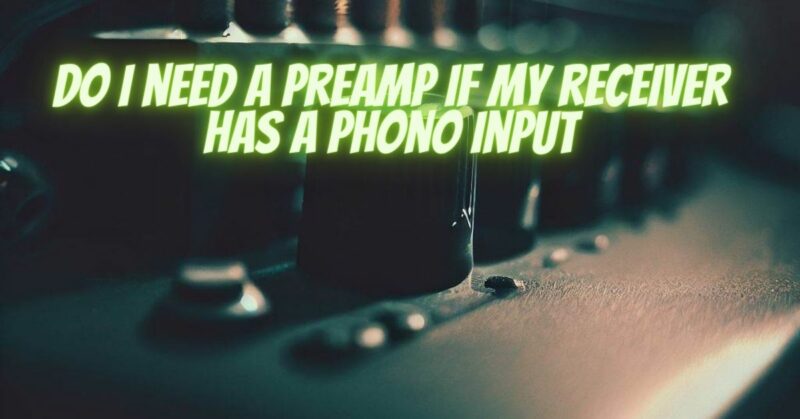If you own a turntable and a receiver with a dedicated phono input, you might be wondering whether you still need a separate preamp for your setup. The presence of a phono input on your receiver implies that it already has a built-in phono preamp (also known as a phono stage). In this article, we will explore the role of a phono preamp, discuss the implications of using a receiver’s phono input, and help you determine if you need an additional preamp for your turntable.
Understanding the Phono Preamp:
A phono preamp is an essential component for turntables as it boosts the low-level phono signal, applies the necessary equalization, and prepares it for amplification. The signal from a turntable’s cartridge is much weaker and requires specific equalization curves (such as RIAA) to accurately reproduce the original audio.
Receiver with Phono Input:
Many receivers come equipped with a phono input, which includes a built-in phono preamp. This feature allows you to connect your turntable directly to the receiver without the need for an external preamp. The built-in phono preamp amplifies the signal and applies the correct equalization, making it compatible with line-level inputs of the receiver.
Determining the Need for a Separate Preamp:
- Compatibility: If your turntable has a built-in phono preamp or if your receiver has a dedicated phono input, you can connect them directly without a separate preamp. Ensure that your turntable’s output matches the input requirements of the receiver’s phono input (e.g., moving magnet vs. moving coil).
- Sound Quality: While a receiver’s built-in phono preamp can adequately amplify the signal, it may not offer the same level of sonic performance as a high-quality standalone preamp. If you are an audiophile or have high expectations for audio fidelity, you may consider investing in a dedicated preamp to enhance sound quality.
- Flexibility and Upgradability: Standalone preamps offer more flexibility and the ability to upgrade your setup in the future. If you anticipate changing turntables, cartridges, or amplifiers, having a separate preamp allows you to make specific adjustments to optimize the audio performance.
- Additional Features: Standalone preamps often offer extra features like adjustable gain, cartridge loading options, and customization settings, allowing you to fine-tune your sound according to your preferences. If you value these advanced capabilities, a dedicated preamp may be worth considering.
Conclusion:
If your receiver has a phono input, it likely includes a built-in phono preamp that can handle the amplification and equalization requirements of your turntable. In such cases, you do not need a separate preamp unless you desire specific audio enhancements, customization options, or plan to upgrade your setup in the future. Consider factors such as sound quality, flexibility, and additional features when deciding whether to invest in a standalone preamp. Ultimately, it’s a personal choice based on your audio preferences and goals for your turntable setup.


